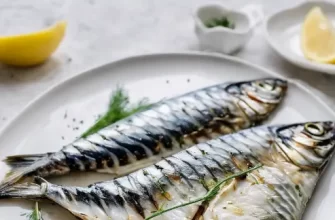Fish is known to be high in omega-3 fatty acids, a group of polyunsaturated fatty acids that fight inflammation in the body, protect blood vessels, and help prevent cancer, diabetes, vision loss, and Alzheimer’s disease.However, not all fish is good, and there are three groups of fish that can do more harm than good.
Which fish are harmful?
The third place in the top-3 most harmful fish were representatives of the carp family. These fish contain opisthorchis – flat worm parasites that can affect the human liver.
The second place is occupied by predatory fish: shark, swordfish, tuna, mackerel and marlin. They may contain heavy metals such as mercury and cadmium, which can accumulate in all organs and poison the human body.
Among the most harmful fish gastroenterologist included scavengers: catfish, pangasius and tilapia.They “eat everything from carrion” to human waste.
Fish That Pose a Dining Hazard
Venturing into the world of seafood offers a wide array of delicious options, but it also surfaces a surprising truth: not all fish are fair game for the dinner table. Some fish are downright dangerous to eat, whether due to their inherent toxic nature or the conditions they live in that contribute to the potential peril. Let’s explore some of these underwater dwellers that can make dining a risky experience.
1. Fugu (Pufferfish)
Perhaps the most infamous on the list, the Fugu, or pufferfish, found predominately in Japanese cuisine, is a delicacy that can turn deadly if not prepared correctly. Fugu contains tetrodotoxin, a potent neurotoxin with no known antidote. Chefs must undergo rigorous training for years to master the art of preparing this dish safely.
2. Shark
Sharks are majestic predators of the sea, but their meat can contain high levels of mercury due to biomagnification. Over time, consuming shark meat could lead to mercury poisoning, which can have serious implications for health, including neurological damage.
3. Tilefish
Often found in the warm waters of the Gulf of Mexico and Atlantic Ocean, Tilefish should be consumed with caution. Like shark, Tilefish are known to have elevated levels of mercury, and the U.S. Food and Drug Administration recommends that particularly pregnant women and young children avoid this species.
4. Swordfish
Another popular yet potentially problematic choice is Swordfish. Like shark and Tilefish, its position at the top of the food chain means it may harbor higher mercury levels. Moderate consumption is key to enjoying this fish without overexposure to toxins.
5. King Mackerel
King Mackerel is another one known to contain high mercury levels, and so it is best consumed infrequently to prevent mercury build-up in the body. The FDA’s advisory is similar here too, with recommendations to avoid the fish in vulnerable groups such as pregnant women and children.
6. Blowfish
Blowfish are similar to pufferfish and contain tetrodotoxin, which can be fatal. Found in several oceans, but most notably in the Indo-Pacific, the preparation of Blowfish should not be taken lightly.
7. Escolar
Also known by its tempting moniker “butterfish,” the Escolar has earned a notorious reputation due to its indigestible wax ester content. Consumption of this fish can lead to a condition known as keriorrhea, which induces oily and orange gastrointestinal discharge, stomach cramps, and other uncomfortable symptoms.
8. Barracuda
Common in tropical regions, Barracuda can be dangerous because this predatory fish may contain ciguatoxin, especially those caught in the Caribbean or the Pacific Ocean. Ciguatera poisoning can cause gastrointestinal and neurological effects that may last for weeks or even months.
9. Moray Eel
Moray Eel carries an elevated risk of ciguatera toxin contamination. Their serpentine shape and fearsome appearance are matched by the potential danger from consumption.
10. Red Snapper
While not inherently dangerous, Red Snapper can be mislabeled and replaced with other fish species that carry risks of toxins such as ciguatoxin. Always ensure your Red Snapper is sourced from a reputable supplier.
Proceed with Caution with High-Risk Fish
| Fish Type | Main Risk Factor | Recommendation |
|---|---|---|
| Fugu | Tetrodotoxin | Eat only when prepared by certified chefs. |
| Shark | Mercury accumulation | Avoid due to high mercury levels. |
| Tilefish | Mercury accumulation | Limit consumption, avoid for vulnerable groups. |
| Swordfish | Mercury accumulation | Eat in moderation. |
| King Mackerel | Mercury accumulation | Limit consumption, avoid for vulnerable groups. |
| Blowfish | Tetrodotoxin | Avoid due to lack of safe preparation standards. |
| Escolar | Wax ester content | Avoid due to the risk of keriorrhea. |
| Barracuda | Ciguatoxin | Avoid, especially from high-risk areas. |
| Moray Eel | Ciguatoxin | Consume with caution. |
| Red Snapper | Mislabeling/misidentification | Ensure it’s from a reputable source. |
What kind of fish to choose?
The gastroenterologist advises to give preference to small fish, because they live a short time and do not have time to accumulate metals in themselves, and do not consume “potential carriers of evil”.We recommend eating keta, herring, pink salmon, cod, pollock and mackerel.As an alternative, we recommend seaweed, mussels, shrimp and squid, which are not dangerous for the body and, like fish, are rich in omega-3 fatty acids.









